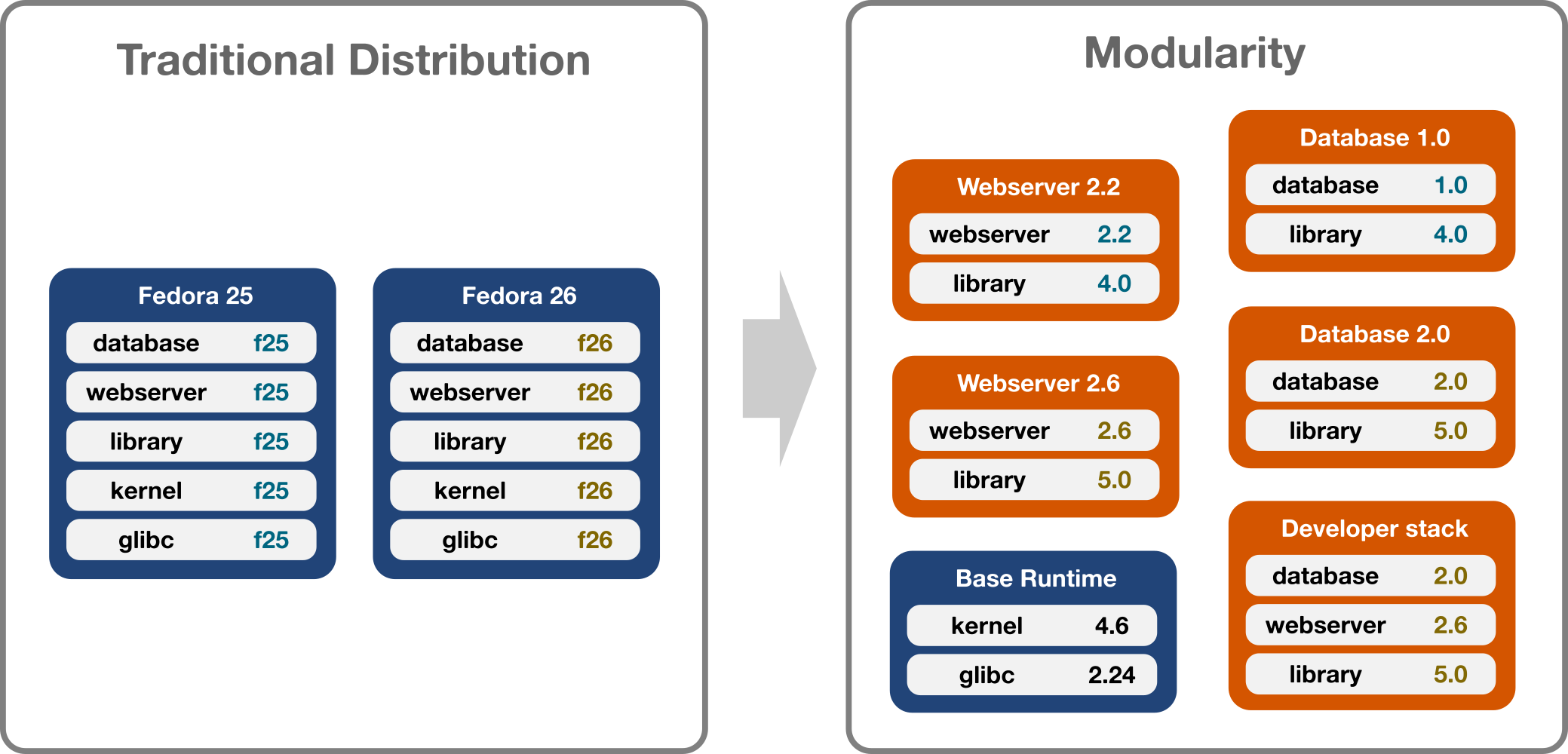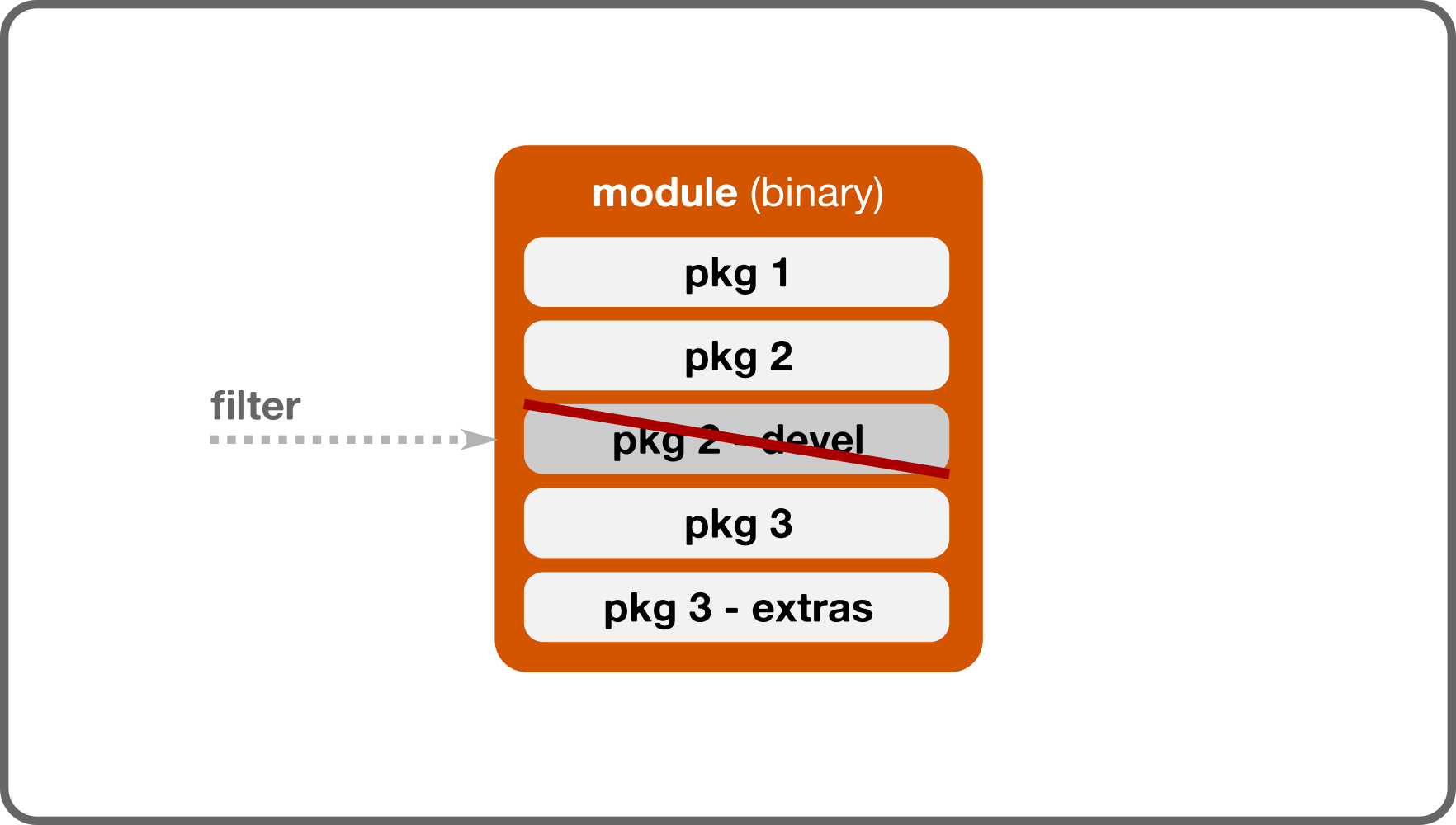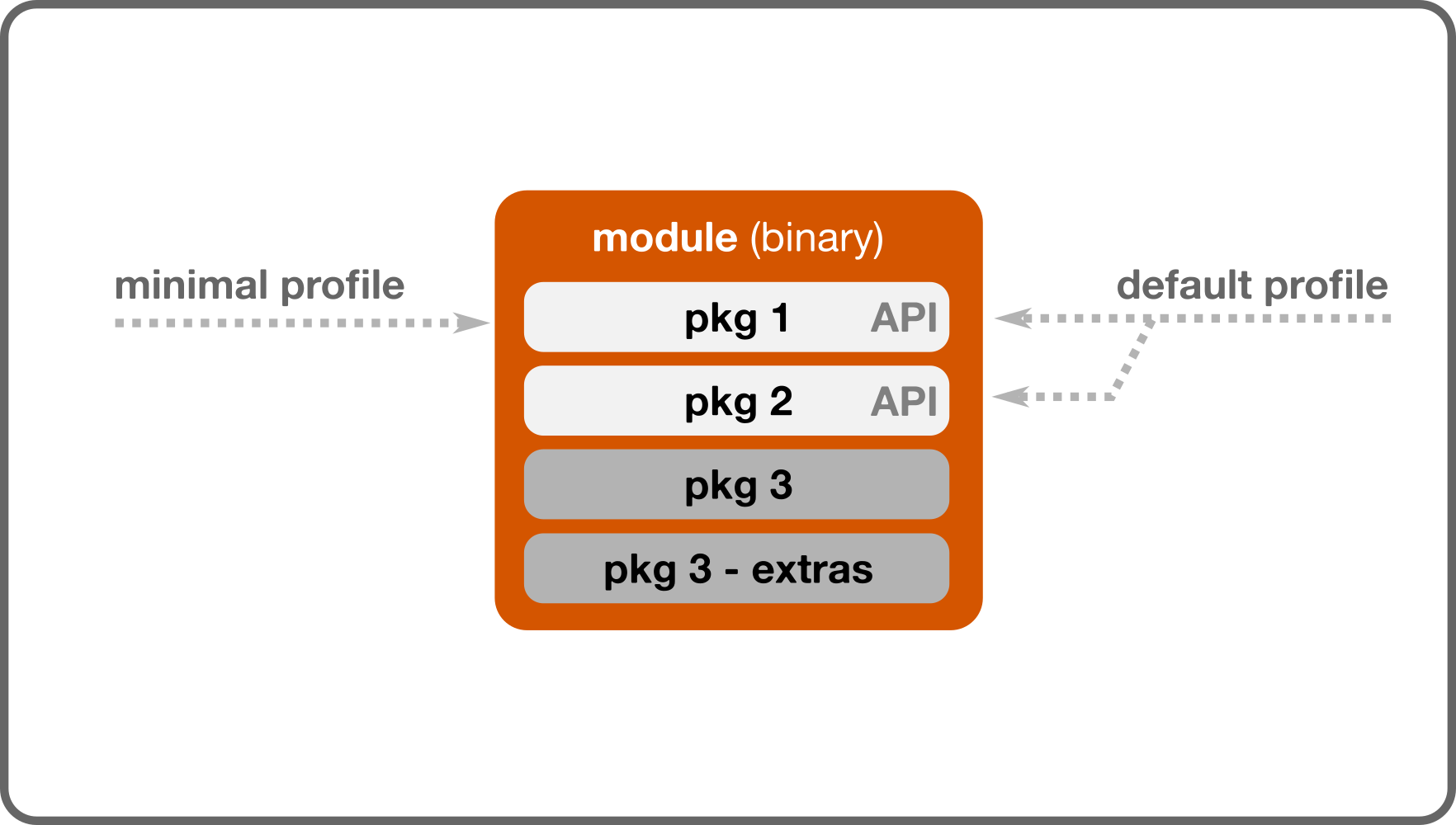with multiple versions of components on different lifecycles.
We have changed our plan and decided for a more iterative, hybrid approach. We are still finishing the details of the new hybrid architecture that will allow packagers to opt-in only when they want to while keeping all content available for users.
Modularity splits the Linux distribution into smaller pieces
called modules.
Modules are provided in multiple streams and on
independent lifecycles.

Modules come in different streams with
independent lifecycles.
Streams have different goals - specific version,
stability, or following upstream.

Packagers decide how to build - by defining components, build order, and buildroot.

Packagers decide what to ship - by filtering unnecessary binary packages.

Packagers decide how to use - by defining a supported API and install profiles.

Each module can be built into multiple artifacts.
Containers for clouds and servers, flatpaks* for
desktop, RPMs for tradition.

* Flatpaks are more future than the other two, but on the list!
We post regular updates to our Fedora Modularity YouTube Channel.
Come to our regular meeting, ask us on the mailing list, or discuss on our IRC channel.